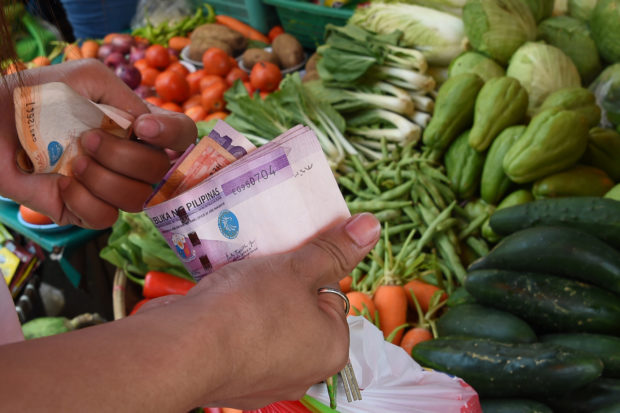Inflation in the Philippines may have further accelerated in January as the Bangko Sentral ng Pilipinas (BSP) expects the month’s average to range from 7.5 percent to 8.3 percent, with a chance of surpassing December’s 8.1 percent that was thought to have been the peak.
The BSP said in a statement that increases in electricity rates, prices of petroleum products and key food items, as well as the approval of the increases in water rates and the annual rise in “sin” taxes were likely the factors behind the higher inflation rate.
These factors would have overwhelmed the ones that, on the other hand, were pulling down prices such as lowered prices of cooking gas or LPG and the appreciation of the Philippine peso against the US dollar.
The peso closed at 54.64:$1 on Jan. 31, which was P1.11 less than 55.755:$1 on Dec. 31, 2022.
However, Fitch Solutions said in a commentary that the rate of growth in the prices of goods and services in the Philippines is expected to ease downward from the 5.8 percent average recorded in 2022 to 5.4 percent in 2023 and ending this year at 2.7 percent in December.
Key risk
“The risk now is that inflation remains elevated at these levels for longer than anticipated, which will accelerate the erosion of household purchasing power,” Fitch Solutions said.
The Fitch group unit added that in the Philippines as well as in many other markets, inflationary pressures remain high and the rate of price changes continues to be higher than the target of the BSP even if they are slowing down.
The BSP’s goal is to shepherd annual average inflation within the range of 2 to 4 percent. The regulator believes that while this might not be met in 2023, it expects to achieve the goal in 2024.
In the January update of the International Monetary Fund’s (IMF) World Economic Outlook report, the IMF said that globally, 2023 will see inflation peaking amid low output growth.
Still, the multilateral lender revised upward its 2023 global growth forecast to 2.9 percent from the 2.7-percent forecast last October, but still slower than the 3.4-percent growth in 2022.
“The rise in central bank rates to fight inflation and Russia’s war in Ukraine continue to weigh on economic activity,” the IMF said.
Global rate
Even so, the IMF expects global inflation to fall from 8.8 percent in 2022 to 6.6 percent in 2023 and 4.3 percent in 2024.
Further, the group said a faster fall in inflation—compared with its forecast—might happen considering a stronger boost from pent-up demand in numerous economies.
On the other hand, inflation might be worse than the IMF’s forecast if severe health outcomes in China would hold back the recovery, Russia’s invasion of Ukraine would escalate, and tighter global financing conditions would worsen debt distress.
“Financial markets could also suddenly reprice in response to adverse inflation news, while further geopolitical fragmentation could hamper economic progress,” the IMF said. INQ
